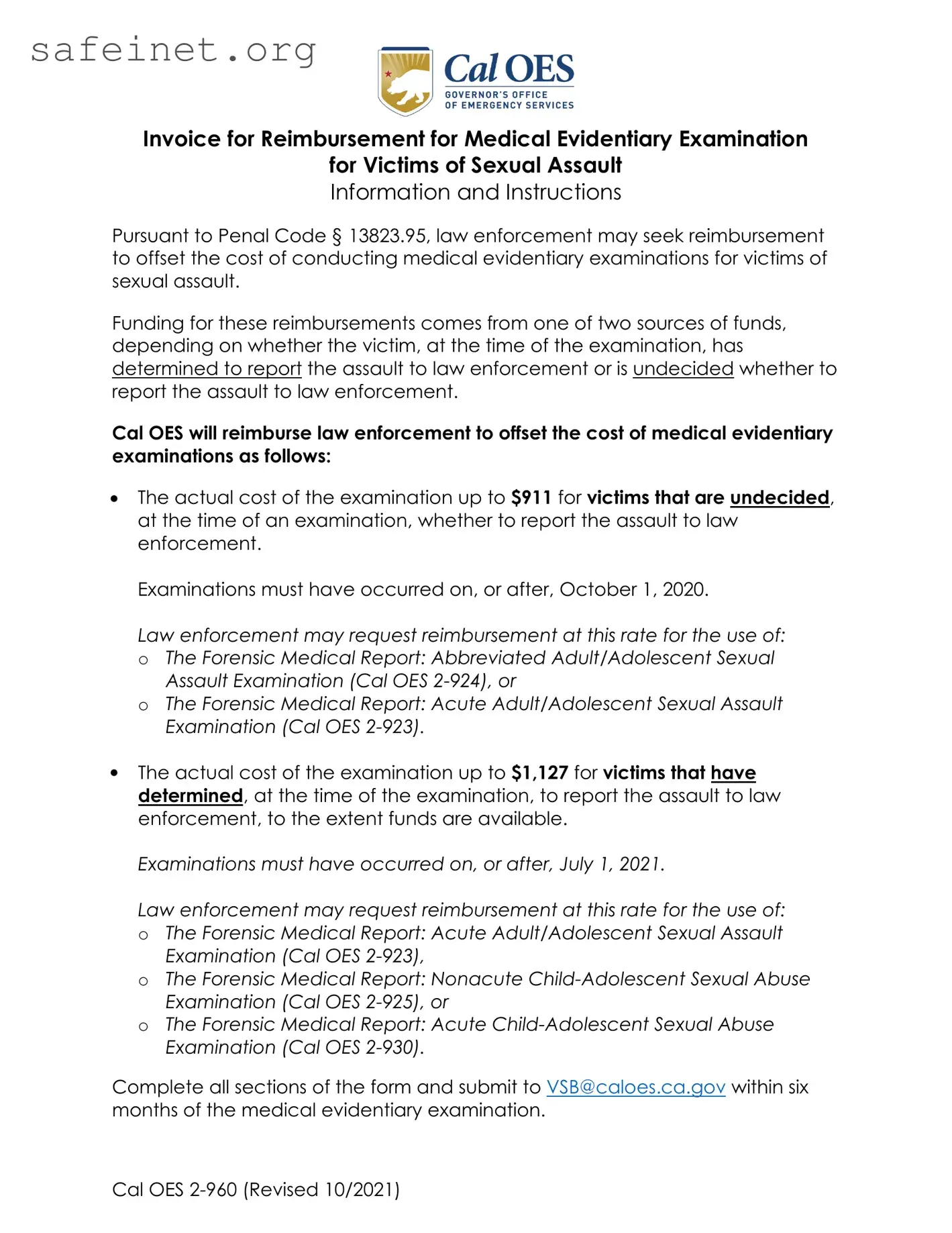What is the purpose of the Examination Invoice form?
The Examination Invoice form is used by law enforcement agencies to seek reimbursement for the costs associated with conducting medical evidentiary examinations for victims of sexual assault. These reimbursements help mitigate the financial burden on law enforcement for these critical services.
Who is eligible for reimbursement using this form?
Reimbursement is available for law enforcement agencies conducting examinations for two categories of victims: those who are undecided about reporting the assault and those who have decided to report it. The eligibility for reimbursement depends on the timing of the victim's decision regarding law enforcement reporting and the type of examination conducted.
What are the reimbursement amounts for the different victim categories?
For victims who are undecided about reporting the assault at the time of examination, law enforcement can request reimbursement of up to $911. For victims who have determined to report the assault, the reimbursement can be up to $1,127. These amounts are capped depending on the type of examination performed.
What examinations are covered under the reimbursement?
For victims who are undecided, the covered examinations include the Forensic Medical Report: Abbreviated Adult/Adolescent Sexual Assault Examination and the Forensic Medical Report: Acute Adult/Adolescent Sexual Assault Examination. For victims who have determined to report, the eligible examinations include the Forensic Medical Report: Acute Adult/Adolescent Sexual Assault Examination, Nonacute Child-Adolescent Sexual Abuse Examination, and Acute Child-Adolescent Sexual Abuse Examination.
How long do I have to submit the Examination Invoice form?
The completed Examination Invoice form must be submitted within six months of the medical evidentiary examination. Timely submission is essential to ensure reimbursement is processed efficiently.
What information is required on the Examination Invoice form?
The form requires detailed information about the law enforcement agency, the physical address, and the payment mailing address. It also requires specifics about each examination, including the date, case number, actual costs, and the total reimbursement requested.
What happens if the information provided is incorrect or misleading?
Submitting false or misleading information on the form may result in serious consequences, including criminal, civil, or administrative penalties. Individuals are required to certify that the information is true and complete to the best of their knowledge.
How can I contact the California Office of Emergency Services (Cal OES) for assistance?
You can contact the Cal OES by email at [email protected] for any questions or further assistance regarding the Examination Invoice form. Ensure you provide clear details about your inquiry for effective support.
When did the regulations regarding reimbursements go into effect?
The regulations regarding reimbursement amounts and eligibility criteria for medical evidentiary examinations have been in effect for examinations conducted on or after specific dates: October 1, 2020, for victims who are undecided about reporting, and July 1, 2021, for victims who choose to report the assault.


